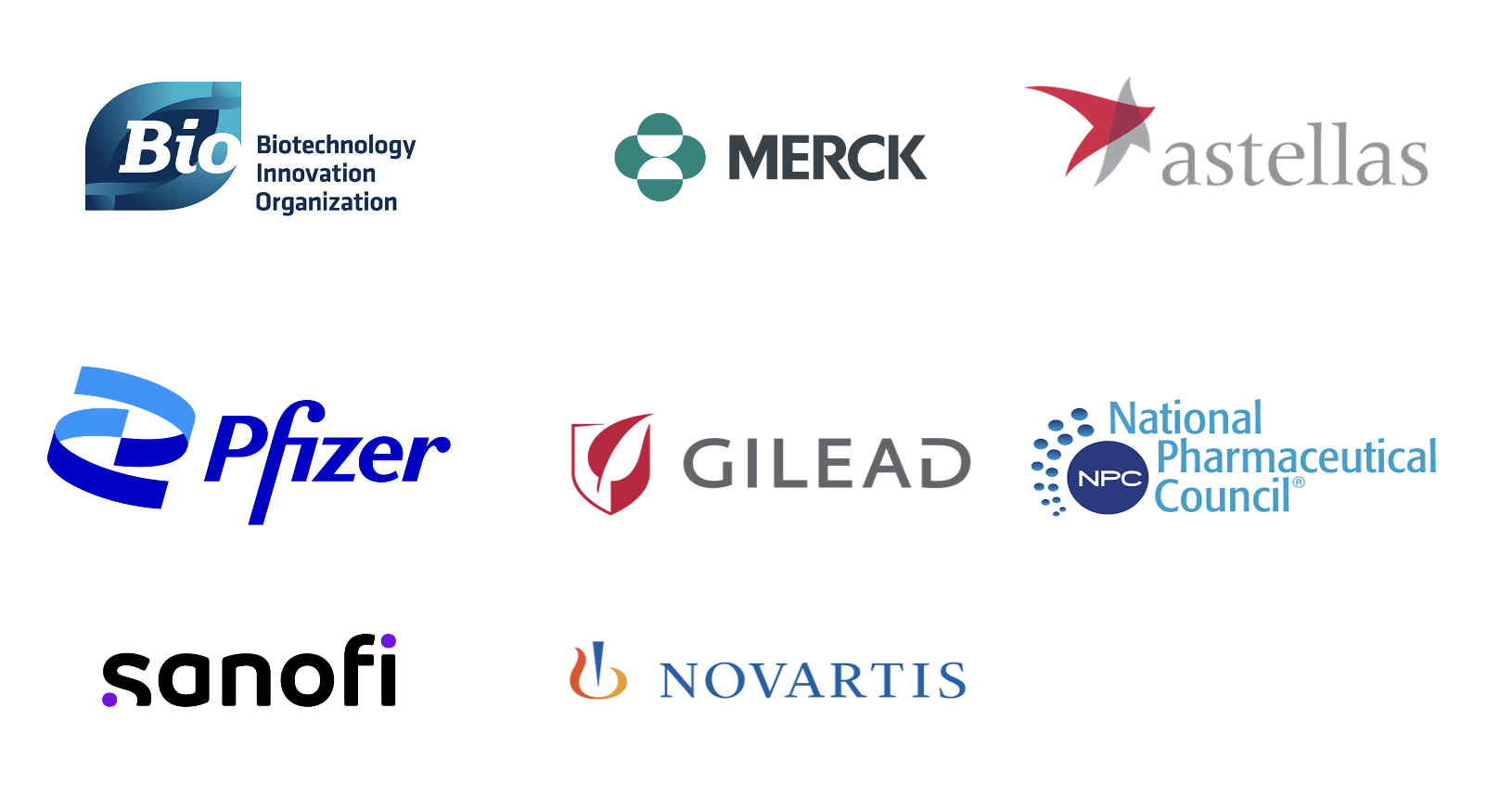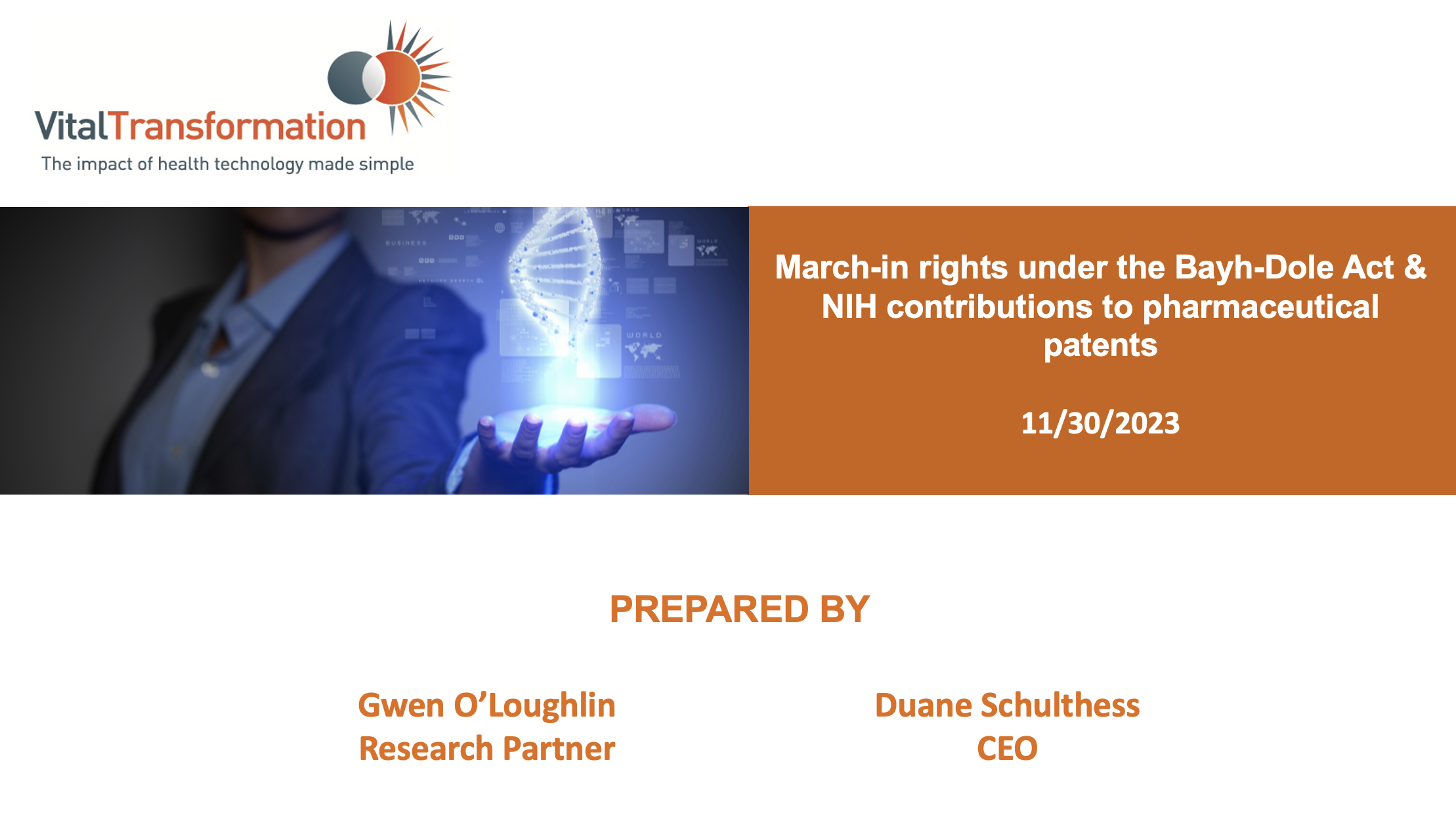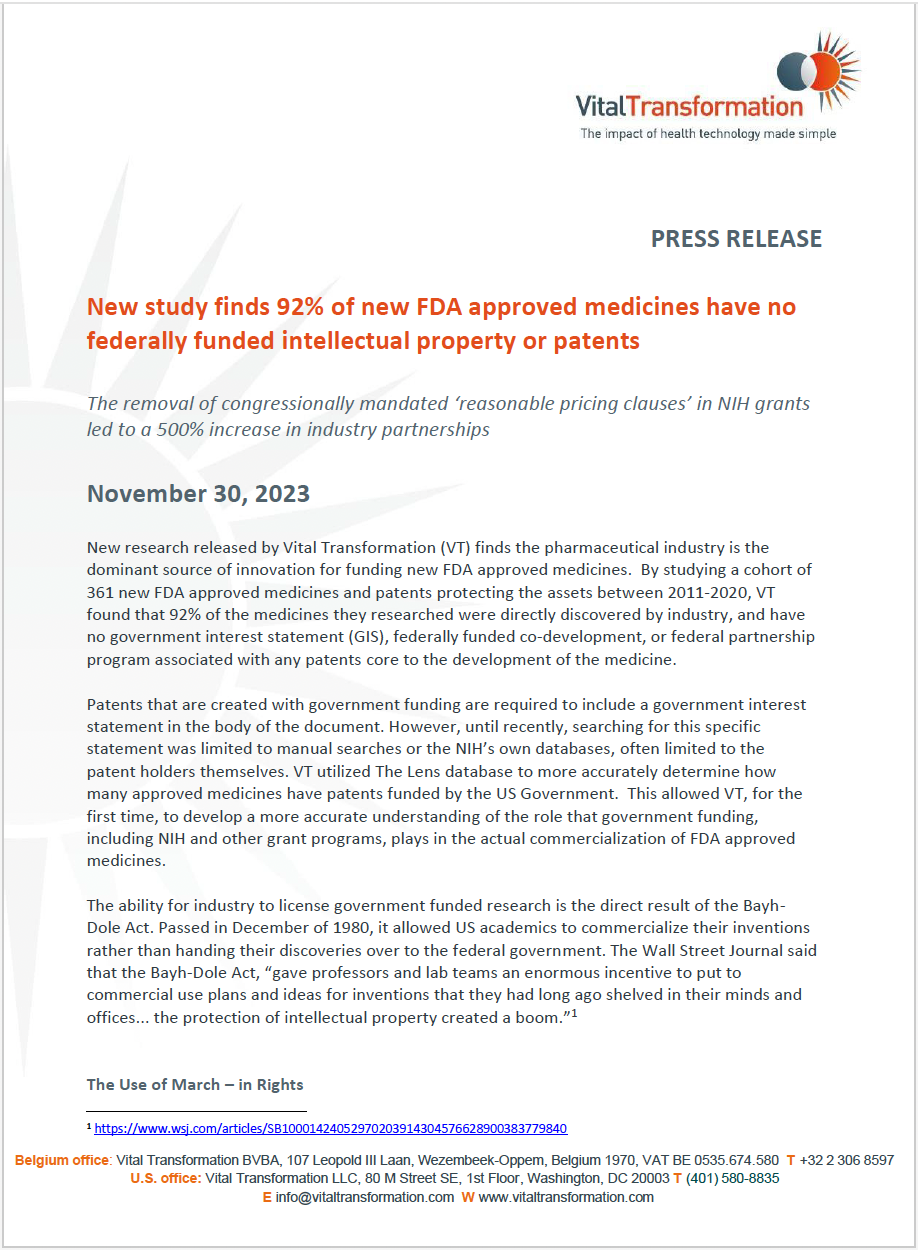March-in rights under the Bayh-Dole Act & NIH contributions to pharmaceutical patents
Intro and Background: Understanding march-in rights under the Bayh-Dole Act in the pharmaceutical sector
- On October 7, 2022, HHS Sec. Xavier Becerra was quoted by Axios as saying that the Federal Government’s use of march-in rights to control drug prices were not “off the table.”
- On January 10, 2023, a group of 25 senators led by Sen. Elizabeth Warren (D-MA), sent a letter to HHS Sec. Xavier Becerra advocating for him to exercise march-in rights for a prostate cancer treatment specifically “to lower prescription drug prices.”
- On March 21, 2023, the NIH denied a petition received in November 2021 to exercise march-in rights under the Bayh-Dole Act to control the price of a prostate cancer treatment as the NIH’s analysis found the treatment was widely available to the public and satisfies the practical application requirement of the provision.
- Given the above, the questions that need to be addressed are the following:
- What are march-in rights?
- What is the government’s actual (not rhetorical) fiscal contribution to new therapies that come to market that could be subject to Bayh-Dole march-in provisions?
- What would happen practically if march-in rights are exercised?
Final Conclusions
- Industry is the dominant source of innovation for novel FDA approved medicines; industry funding for novel patented therapies approved by the FDA from 2011 – 2020 was $44.3 billion, compared to the $276 million the US government contributed to patented drugs that are subject to Bayh Dole. Relevant to this, the previously published report by VT found that over the 20 years leading up to FDA approval of 18 innovative new therapies, the funding contribution from industry to the development of these therapies was 66 times higher than the public funding from all linked NIH grants.
- Research and development investments are a significant risk to the pharmaceutical industry and their investors as not all assets result in a marketed product. The high rate of failure in drug development underscores the challenges and risks associated with bringing new treatments to patients.
- 92% of the therapies in our cohort have no mechanism of action or composition of matter patents with a government interest statement or federally funded co-development program in connection to them
- 99% of the therapies in our cohort cannot be marched-in upon, as the key patents studied do not cover the entire asset’s intellectual property. There are only 5 out of 361 pharmaceutical products in which all available MoA and CoM patents include a government interest statement and could be subject to march-in rights.
- Enacting march-in rights to control prices will create uncertainty and increase risk for inventors based upon previous experiences with fair pricing requirements for NIH CRADAs:
-
- Industry, venture capital will avoid investing in commercializing academic inventions and partnerships with the NIH will plumet
- US biopharma productivity will drop significantly, providing an opportunity for competing foreign biopharma markets to expand, with a high potential for industry to relocate their enterprises
Methodology
- Vital Transformation (VT) has developed a methodology to determine the impact NIH funding involvement has on unexpired patents from a cohort of 361 novel, non-generic, small and large molecule medicines from 2011-2020 listed in the FDA’s orange and purple books.
- Mechanism of action and composition of matter patents were identified in the FDA’s orange book for small molecules and patent records for biologics were manually extracted from USPTO patent filings and BioMedtracker.
- All patents connected to our cohort which have a federal Government Interest Statement (GIS) have been identified using The Lens database.
- All NIH program grant numbers and funding amounts associated with patents including a GIS have been identified.
- Patents identified as co-developed or in partnerships with the federal government through CRADAs, Intermural, or Congressional/Department of Defense (DOD) funding programs are included, although these patents do not possess a GIS.
*federal government interest statement 310-Government License Rights to Contractor-Owned Inventions Made Under Federally Sponsored Research and Development (uspto.gov)
Supported by





